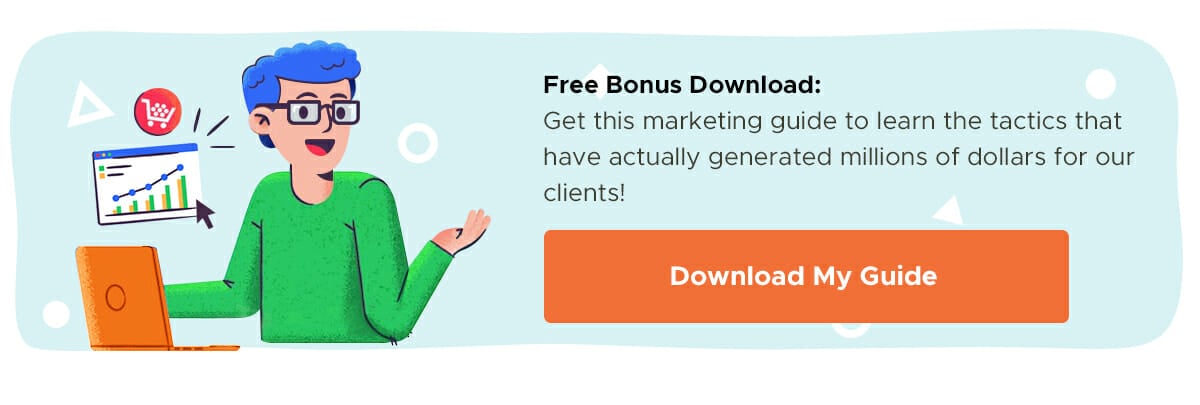When it comes to marketing, brands have a seemingly never-ending list of strategies and channels to choose from. Trends are ever-shifting and new articles come out weekly about the importance of embracing every available platform, strategy and tactic RIGHT NOW.
A good marketing strategy is a multichannel marketing strategy, right? It’s easy to see the value of multichannel, but consider these circumstances:
- What if you have limited time and/or budget?
- What if you’re a brand-new business?
- What if there are other business priorities you need to focus on?
In these cases, it’s not so simple. Devising a solid multichannel marketing strategy can be overwhelming if you lack the hours, money or know-how. Sometimes, it’s more important to focus on just one channel.
That’s right, I said it: focus on just one channel.
The Problem with Multichannel Marketing
Multichannel marketing sounds great in theory, but in practice? It’s harder than most companies think:
- 95% of marketers agree that a multichannel approach is an essential strategy for reaching new customers and generating new sales
- But anywhere from 27%-55% of companies have no multichannel strategy in place
- And 64% of marketers cite lack of resources and investment as top barriers to omnichannel marketing
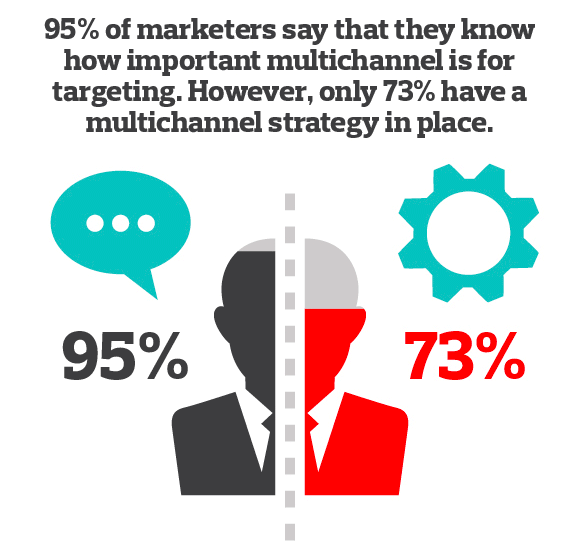
Everyone knows how important multichannel marketing is, yet more than half aren’t doing it – and those that are doing it are experiencing significant barriers to success. So if you’re struggling with marketing across channels, the good news is, you’re not alone.
Brands that can’t do it all – and based on these statistics, most can’t – should focus instead on doing one thing and doing it well.
Learn More:
- Omnichannel Marketing: Using the Content Sprout Method to Overcome Info Overload
- Why You Should Use Multiple Channels to Maximize Your Customer Acquisition
- 17 Actionable Marketing Strategies You Can Borrow from E-commerce
- The Best Paid and Organic Search Channels for 2019
The Case Against Multitasking
Decades of studies have shown that the more tasks you try to perform at the same time, the less effective you’ll be. Multitasking makes you inefficient and hampers productivity and, contrary to popular belief, it’s not just men who are bad at it – according to a Harvard study, women can’t multitask either.
These studies focus on individuals, but the same is true of organizations. It’s important to have a singular mission for your brand, so why do you need to utilize every available avenue to get there?
Narrowing your marketing strategy allows you to put a laser-sharp focus on meeting your business goals. Share on XNo one wants to be a Jack of all trades and a master of none. So unless you have a huge marketing department full of highly specialized people who can tackle each and every channel, you’re better off shifting your focus to the ones you have the know-how and resources to dominate.
How to Choose the Right Marketing Channel to Focus On
That said, how do you decide which marketing channel to funnel your time, resources and money into? You have a few choices, and hopefully there’s some overlap between them. You can focus on:
- What you’re good at
- What’s most successful for your brand
- Where your customers are
Focus on What You’re Good At
Like most marketers, I want to try everything. Every new tactic and every new platform – everything. But I can’t do everything. In the past, when I’ve tried to master every channel all at once, I spread myself too thin and underperformed in all of them as a result.
Now, instead, I focus on what I like to do and what I’m good at. And that’s video. Two years ago, we had about 2,000 followers on our YouTube channel. When I started focusing on it as my main marketing channel, it started to grow. Now, we’re at more than 18,785 subscribers, and we’re getting about 1,350 new ones every month.
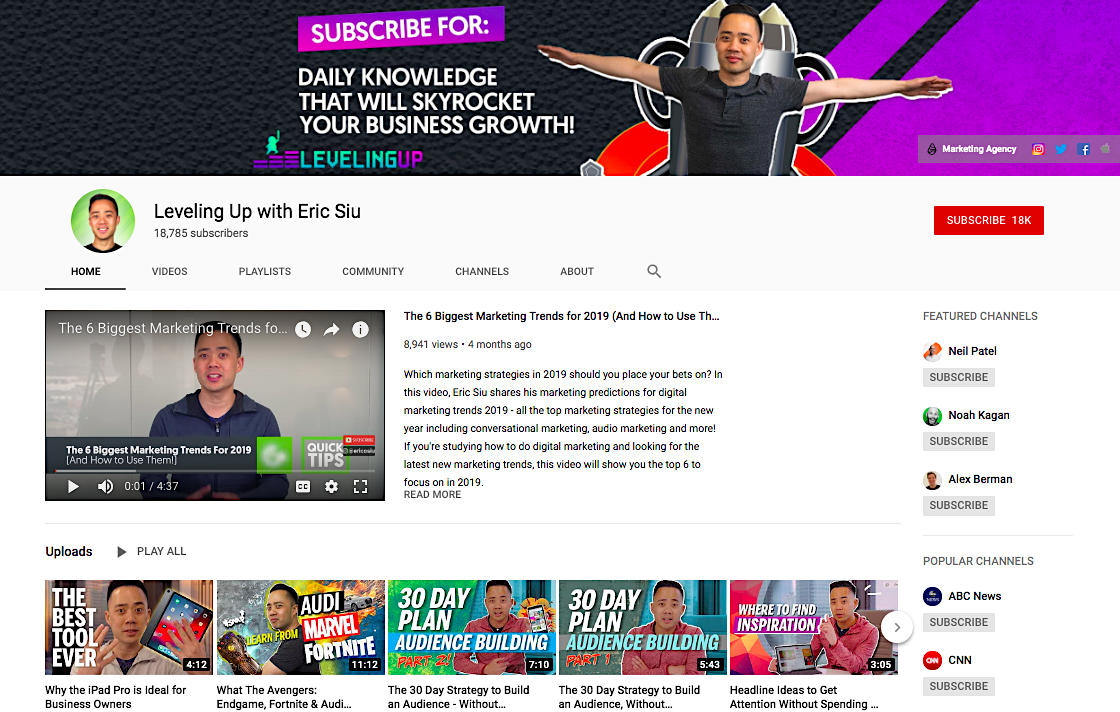
Focusing on just one channel doesn’t mean ignoring the others. I may be using YouTube as my primary marketing channel, but I can take those videos I create and repurpose them for other platforms. I can turn the topic into a podcast or a blog post. I can post the videos on our social media feeds. Once you create one piece of content – which is the hard part – you can give it a second, third or even fourth life in your other channels.
Gary Vaynerchuk cranks out video content like crazy, and he’s good at it. And that focus has paid off – he has almost two million subscribers on his YouTube channel. Or, you might prefer blogging to video content. Neil Patel does, and he’s good at it.
So what are you good at? Focus on content for that channel, and then repurpose it for others.
Focusing on your strengths also allows you to get even better at those skills – and the better you are, the faster and easier it will be to create that content. Down the road, being an expert in a particular channel could even come in handy. You can raise your visibility by contributing to articles on the topic or even turn your expertise into an additional revenue stream.
Learn More:
- How to Perform Marketing Competitor Analysis (+ 6 Best Tools Comparison)
- 7 Marketing Strategies that Work to Increase Conversions
- 12 Best SaaS Marketing Tactics for Business Growth
- What Single Grain’s Marketing Focus Looks Like in 2019
Focus on What’s Most Successful
Maybe you’ve been at this marketing thing for a while and you’re good at a lot of things, but you aren’t sure where to focus your limited resources. This is where data comes in.
Look at what’s been the most successful for you, and do more of that. Even if it’s not where the marketing trends are. Even if it’s not new and exciting.
Take ConvertKit, which recently hit $15 million in annual recurring revenue (ARR), as an example. In a blog post, 15 Lessons from Our First 15 Million, founder Nathan Barry highlighted “Find what works and repeat it” as one of those lessons. He writes: “Webinars were the first scalable growth channel we found that really worked. My first thought was to do those and keep searching for the next thing…but then I realized that we should focus on what’s working. We test and iterate like crazy, but then once it pays off we go all in.”
Webinars may not be the sexiest marketing channel, but if they work, that’s where your focus should be. Don’t get caught up in what everyone else is doing or what the hottest new marketing trend is. Do what works for your business.
Focus on Where Your Customers Are
This one may seem like a no-brainer, but you’d be surprised by how many marketers utilize multiple channels because they feel like they should without considering whether or not their target audience is even there.
You probably have some data on your customers and their interests. Use it. Create personas and figure out where they’re likely to spend their time and money online.
If you already know which marketing channels are successful for your brand, then you probably have a pretty good idea of who your customers are and where you can find them online. With that information, you can figure out how to use your strengths to create the content that will drive conversions.
If you’ve considered all these factors and are still left with two or more channels, then just pick one and go with it. Any one. Just do it.
Focusing on One Channel Saves Time and Money
If you’re blogging, creating videos for YouTube, producing a podcast, running brand pages on Facebook, Twitter, Instagram, Snapchat and LinkedIn, hosting webinars and sending out a weekly email newsletter, you probably have little time for much else. And that time is money.
Those channels probably aren’t all giving you a return on investment, either. Do the math, and focus on the one that is bringing in the customers.
Learn More:
- The Craziest Content Marketing Tactic Ever
- 54 Alternative Ad Networks to Open Up New Channels of Growth in 2019
- The Customer Acquisition Playbook: Email & In-Person Outreach
Your Competitors Are Trying to Do Everything
Chances are, the brands you’re competing with for business are trying to do too much. If you narrow your focus, you’ll have an opportunity to be more competitive.
For example, Brian Dean of Backlinko’s skyscraper technique for blogging relies on looking at the linkable content your competition has produced on a given topic, doing it better, and then making sure the right people know about it.
Here’s the original post that he improved upon:
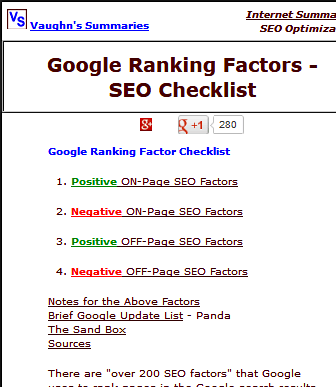
And here’s his skyscraper (i.e. better) version:
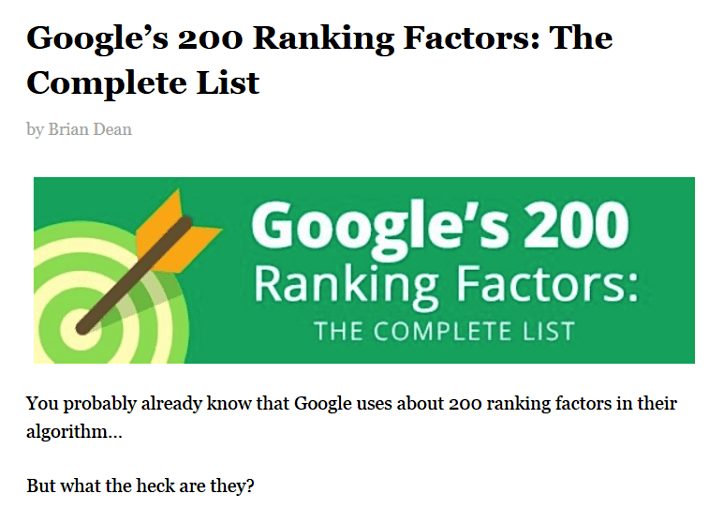
This can be a time-consuming process, but it’s highly effective – and it highlights how important focus is. You can’t write a comprehensive guide to something important in your industry if you’re trying to do everything else, too. But this doesn’t only apply to blogging. Whatever channels your competitors are using, you can find a way to do what they’re doing, only better.
If you’re a newer brand, your competition’s “throw everything at the wall and see what sticks” approach can give you a lot of insight. On which platforms are they getting the most engagement? Where is their content being shared? What types of people are singing their praises (or complaining about them) online? You can learn a lot from a competitor’s attempts at a multichannel marketing strategy – even a failed one.
Once you have an idea of where you can make the most impact, focus on that one channel and make it better than anyone else in your industry. Your competitors will be too busy creating content for multiple channels to notice what you’re doing.
Learn More:
- 13 Ways to Market Your Business Online
- 7 E-commerce Marketing Tasks Every Store Owner Should Outsource
- 44 Must-Have Marketing Tools for any Business in 2019
Don’t Be Afraid to Switch Channels
Picture this: you’ve decided to go all-in on blogging. You wrote 25 blog posts, promoted them all over social media, got some influencers to link to them, sent them out in email newsletters. You did everything you could to get the word out about all this great content. But it generated no leads (or very few leads). What now?
Try another channel.
Maybe video is actually the best way to connect with your customers. Maybe it’s Google Ads. Maybe it’s a webinar. You didn’t get it right on the first try, and that’s okay.
Switching channels doesn’t mean you’re a failure. It just means that there’s not only one right way to market your business, and that what works for someone else may not work for you. Most of marketing is experimenting to see what works, and then doing more of that. If something doesn’t work, it’s a data point – not a mistake.
As Your Business Grows, So Will Your Marketing Channels
I’m not saying that you should put all your resources into managing your YouTube channel indefinitely. You definitely shouldn’t. But it is important to have a multichannel marketing strategy, eventually. And the best way to get there is to build it out over time.
Once you have one marketing channel humming along and helping you to achieve your business goals, then it’s time to expand. In a recent episode of Marketing School, Neil talked about how he wasn’t good at Instagram, so he hired someone who was. Now he has more than 14,000 followers and a high level of engagement on the platform.
If there’s a channel you want to tackle but don’t feel confident about running it yourself, hire someone to do it for you or bring in a consultant to show you the ropes. Or, once you’ve mastered one channel, outsource it or automate it, and then tackle the next. Repeat this process over and over and, eventually, you’ll have a multichannel marketing strategy in place – and every channel will be one that gets results.


